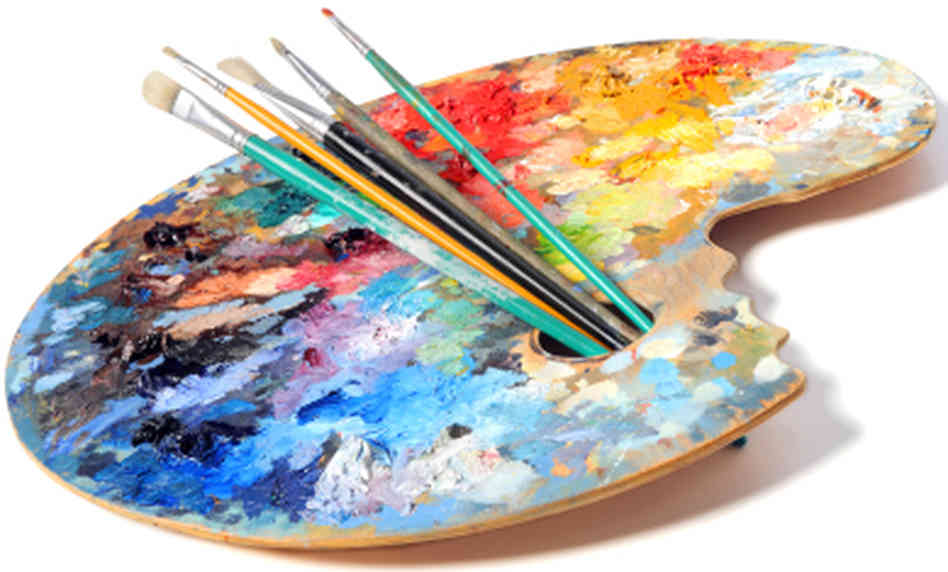The Evolution of Trump Art: From Early Critiques to Contemporary Point Of Views
The Evolution of Trump Art: From Early Critiques to Contemporary Point Of Views
Blog Article
Looking Into the Diverse Globe of Artistic Expression: From Surrealism to Abstract Realism
In the world of creative expression, from the dreamlike landscapes of surrealism to the intricate play of light and type in abstract realism, musicians have actually continually pushed the limits of creativity and creative imagination. Each movement holds a distinct lens where the world is checked out and translated, supplying a peek right into the midsts of human emotion, assumption, and thought. As we discover the multifaceted world of art, we exist with a tapestry of styles, methods, and ideologies that challenge our understanding and prompt consideration. The journey with these varied forms of imaginative expression promises to unwind an abundant tapestry of visual storytelling and intellectual query that astounds the mind and stirs the spirit.
Surrealism: Unleashing the Subconscious
Surrealism, an avant-garde imaginative motion of the 20th century, looked into the depths of the subconscious, revealing a world of dream-like imagery and non-traditional associations. Headed by musicians like Salvador Dali, René Magritte, and Joan Miró, Surrealism looked for to test the standard means of seeing and understanding art. Through techniques such as automatism and dream analysis, Surrealist musicians intended to use the subconscious mind to disclose concealed realities and wishes.
One of the crucial elements of Surrealism was the emphasis on the irrational and the uncanny. By combining unexpected elements in their jobs, Surrealist musicians intended to produce a sense of disorientation and shock in the visitor. This disturbance of logic and factor was indicated to provoke a deeper expedition of the subconscious and the secrets of the human psyche.
Abstract Realism: Redefining Assumption
Challenging standard artistic boundaries, Abstract Realistic look redefines understanding through the blend of well-known aspects with abstract forms. This cutting-edge technique to art integrates the representational accuracy of realistic look with the innovative freedom of abstraction, supplying customers an one-of-a-kind visual experience that prompts them to examine their assumption of fact.
In Abstract Realism, artists make every effort to record the essence of their topics while likewise infusing their collaborate with a sense of deepness and intricacy with abstract elements. By mixing the aware of the unknown, these artists invite target markets to engage with their items on several degrees, motivating them to discover the nuances of kind, color, and appearance.

Cubism: Fragmentising Fact
Making use of geometric types and fragmented viewpoints, Cubism revolutionized the artistic representation of reality in the early 20th century. This method not only deconstructed truth yet also emphasized the monotony of the canvas, paving the way for future abstract art movements.

Cubism can be classified right into 2 primary stages: Analytical Cubism, characterized by single color design and complex, fragmented types; and Synthetic Cubism, which integrated collage aspects and brighter colors right into the make-ups. Via these distinctive stages, Cubism influenced not only painting but also architecture, sculpture, and design. trump art. Its effect reverberated throughout the art globe, inspiring musicians to check out new means of standing for the world and interpreting around them
Expressionism: Feelings on Canvas
Checking out the depths of human feelings through vivid and meaningful brushstrokes, Expressionism emerged as an extensive artistic activity in the early 20th century. Unlike previous art activities that concentrated on depicting the outside world, Expressionism dug into the interior realm of the artist's mind, intending to evoke raw emotions and prompt visceral actions from audiences.
Expressionist musicians, such as Edvard Munch, Egon Schiele, and Emil Nolde, declined typical notions of appeal and realism in support of distorting type and shade to convey subjective sensations. Using exaggerated brushwork, strong shades, and distorted numbers assisted develop a sense of anxiousness, alienation, or interest in their works.
One of one of the most famous examples of Expressionism is Munch's "The Scream," which catches the intense stress and anxiety and misery of contemporary life via its swirling, distorted figure versus a blood-red skies. Through their mentally billed jobs, Expressionist artists looked for to test conventional creative standards see and provide a window into the unstable midsts of the human heart.
Contemporary Art: Developing Viewpoints

One of the defining qualities of modern art is its consistent evolution and capability to adjust to transforming social landscapes. Musicians are increasingly integrating innovation right into their method, obscuring the lines between the physical and digital realms. This combination of mediums enables ingenious methods of narration and involving with target markets in a more interactive manner.
Furthermore, contemporary art commonly works as a system for social discourse, resolving pushing concerns such as identification, national politics, and the environment. Musicians are using their job to anchor prompt and stimulate crucial discussions idea, clarifying the complexities of the globe we stay in. As viewpoints remain to progress, contemporary art remains a influential and dynamic force in forming our social landscape.
Final Thought
In final thought, the world of imaginative expression includes a large range of activities and styles, each with its own one-of-a-kind strategy to communicating meaning and feeling. From surrealism's expedition of the subconscious to abstract realistic look's redefining of understanding, and from cubism's fragmentation of reality to expressionism's representation of feelings, art remains to advance and test point of views - trump art. Contemporary art reflects the ever-changing globe we live in, supplying new means to translate and understand the intricacies of our reality
As we discover the diverse world of art, click this site we are provided with a tapestry of styles, strategies, and approaches that challenge our understanding and provoke contemplation. Its effect reverberated throughout the art world, motivating artists to check out new methods of standing for the world and analyzing around them.

Report this page